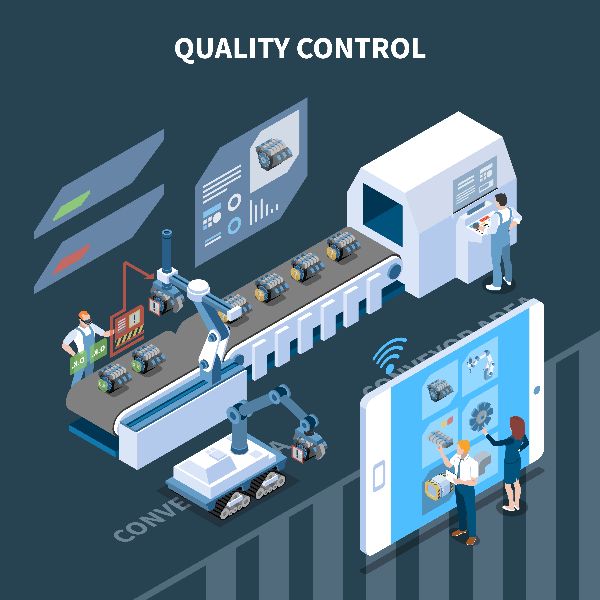
Ranjeet Singh Jadaun

Padmakar Pachorkar
- Assistant Professor, Department of Mechanical Engineering, Shri Ram College of Engineering & Management, Banmore, Gwalior, Madhya Pradesh, India
- Assistant Professor, Department of Mechanical Engineering, IES University, Bhopal, Madhya Pradesh, India
Abstract
The Taguchi Method, pioneered by Genichi Taguchi, stands as a powerful optimization tool within the realm of production engineering. This paper delves into the principles, applications, and significance of the Taguchi Method in enhancing manufacturing processes. With a focus on minimizing variation and improving performance, this methodology plays a crucial role in addressing challenges faced by industries in their pursuit of operational excellence. The core components of the Taguchi Method, including factorial experimentation, orthogonal arrays, and the signal-to-noise ratio (SNR), form the foundation for its success. Through real-world case studies across diverse industries such as automotive, electronics, and pharmaceuticals, this paper illustrates the tangible benefits of implementing the Taguchi Method. By showcasing instances of cost savings and improved product quality, it highlights the methodology’s ability to optimize processes efficiently. The paper also explores the advantages offered by the Taguchi Method, including the reduction of variation, increased robustness, and cost-effective optimization when compared to traditional approaches. However, it also addresses challenges and limitations associated with its application, offering insights into strategies for overcoming potential hurdles. In the context of modern production engineering, this paper discusses the integration of the Taguchi Method with Industry 4.0 technologies, emphasizing the role of data analytics and machine learning in enhancing optimization. The conclusion reinforces the significance of the Taguchi Method, encouraging further research and adoption in manufacturing industries as a pathway to achieving improved reliability, performance, and cost-effectiveness in production processes.
Keywords: Orthogonal Arrays, Signal-to-Noise Ratio (SNR), Analysis of Variance (ANOVA), Digital Twin, Industry 4.0
[This article belongs to International Journal of Robotics and Automation in Mechanics(ijram)]
Browse Figures
References
- Hasçalık, U. Çayda, Optimization of turning parameters for surface roughness and tool life based on the Taguchi method, Int. J. Adv. Manuf. Technol. 38 (2008) 896–903.
- Hamdi Aouici, Mohamed Athmane Yallese, Brahim Fnides, Kamel Chaoui, Tarek Mabrouk, Modeling and optimization of hard turning of X38CrMoV5-1 steel with CBN tool: Machining parameters effects on flank wear and surface roughness, Journal of Mechanical Science and Technology. (2011) 25 (11), 2843-2851.
- Khamel, N. Ouelaa, K. Bouacha, Analysis and prediction of tool wear, surface roughness and cutting forces in hard turning with CBN tool, J. Mech. Sci. Technol. 26 (11) (2012) 3605–3616.
- Sıtkı Akıncıog˘lu, Hasan Gökkaya, _Ilyas Uygur, The effects of cryogenic-treated carbide tools on tool wear and surface roughness of turning of Hastelloy C22 based on Taguchi method, Int J Adv Manuf Technol. (2015) s00170-015-7356-z.
- Ramanuj Kumar, Ashok Kumar Sahoo, Purna Chandra Mishra, Rabin Kumar Das, Comparative study on machinability improvement in hard turning using coated and uncoated carbide inserts part II modeling, multi-response optimization, tool life, and economic aspects, Adv. Manuf. (2018) s40436- 018-0214-0.
- Saini, I.S. Ahuja, V.S. Sharma, Influence of cutting parameters on tool wear and surface roughness in hard turning of AISI H11 tool steel using ceramic tools, Int. J. Precis. Eng. Manuf. 13 (8) (2012) 1295–1302.
- Tamizharasan, T. Selvaraj, A. Noorul Haq, Analysis of tool wear and surface finish in hard turning, Int. J. Adv. Manuf. Technol. 28 (2006) 671–679.
- Sheng, A modeling method for turning parameters coupling based on minimum cutting tool wear, Int. J. Adv. Manuf. Technol. 76 (2015) 705–712.
- Sivaiah, Evaluation of hybrid textured tool performance under minimum quantity lubrication while turning of AISI 304 steel, J. Braz. Soc. Mech. Sci. Eng. 41 (2019) 571.
| Volume | 01 |
| Issue | 02 |
| Received | March 1, 2024 |
| Accepted | March 7, 2024 |
| Published | April 1, 2024 |



